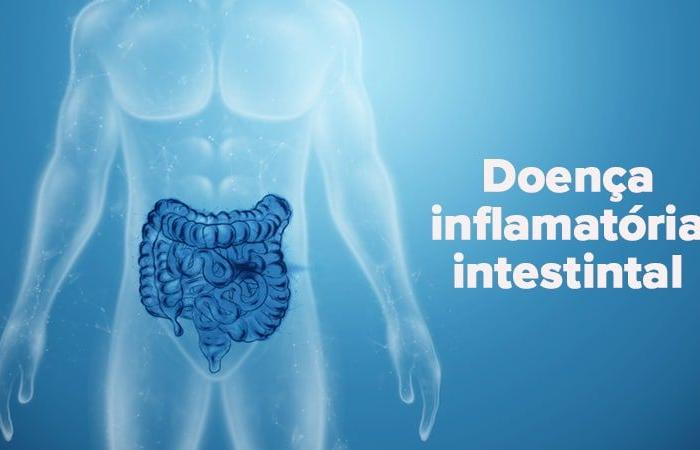When it comes to inflammatory bowel disease (IBD), one of the main barriers to implementing public policies in the country is the lack of epidemiological data: who these patients are, how many there are and how serious the cases are. But this scenario is starting to improve. A few years ago, the Brazilian Crohn’s Disease and Colitis Organization (GEDIIB) created a National Patient Registry. In February this year, the entity published data from the first cohort of this database. In the article published in the journal Scientific Reports Nature Research,[1] GEDIIB researchers specifically analyzed clinical factors associated with disease severity in these patients.
According to Dr Ligia Yukie Sassaki, professor at the Faculty of Medicine of Botucatu at Universidade Estadual Paulista (Unesp), member of the GEDIIB National Patient Registry Commission and one of the authors of the article, the registry was created from data collected by the platform REDCap.
In an interview with Medscapethe doctor said that the initiative has always been one of GEDIIB’s main missions since its foundation, it was consolidated during the management of Dr. Rogerio Saad-Hossne (2019-2020 and 2021-2022) with the registration of the first patient on the RedCap platform , and remains increasingly stronger and supported by the board, currently represented by the management of Dr. Cristina Flores (2023-2024).
For the first published article, Dr. Ligia, together with Dr. Adriana Ribas Andrade and Dr. Mikaell Faria, also members of the National Patient Registry Commission, plus Dr. Renata Froes, coordinator of this commission, and other researchers from GEDIIB, analyzed data included in the National Patient Registry between August 2020 and August 2022.
In total, data from 1,179 patients were analyzed, including patients with ulcerative colitis, Crohn’s disease and unclassified colitis. The majority were female (59%) and the average time between the onset of signs and symptoms and the diagnosis of the disease was 3.85 years.
Complications, comorbidities and inflammation: warning signs
The investigation showed that, in the case of ulcerative colitis, the severe form of the disease was associated with the presence of extensive colitis, extraintestinal manifestations, being male, the presence of comorbidities and a family history of colorectal cancer. In the case of Crohn’s disease, the clinical factors associated with greater severity were: presence of stenosing and fistulizing behavior (categories B2 and B3, according to the Montreal classification), colonic location and extraintestinal manifestation. In general, the factors associated with IBD severity were younger age at diagnosis, greater extent of the disease and presence of rheumatological extraintestinal manifestations.
The clinical factors observed in the GEDIIB study are in line with what has been observed in the literature and, according to Dr. Lígia, reflect how the severity of IBD is related to the presence of comorbidities, the presence of complications and a greater inflammatory load.
According to the doctor, the findings have a major impact on clinical practice. “If we identify this patient profile, it needs to be looked at more carefully. We need to monitor it more closely, initiate more effective therapies and pay attention to the responses to the prescribed therapy. If the patient does not present a clinical and endoscopic response to the established therapy, a reevaluation of the clinical treatment is indicated. With this patient we cannot take too long to make some therapeutic decisions. If we do not control the inflammatory process adequately and quickly, it has a chance of developing into a complication, which, in the case of the study, was the need for hospitalization and surgery”, he highlighted.
Few therapeutic options are still a challenge in the SUS
The literature shows that the prevalence of IBD in Brazil is greater than 60 cases per 100 thousand inhabitants.[2] And an important part of these patients is cared for in the Unified Health System (SUS), which, in terms of access to medication, represents a challenge.
Dr. Lígia recalled that patients with Crohn’s disease who present the clinical severity factors identified in the GEDIIB study should now begin treatment with biological therapy, in accordance with national and international consensus.
Currently, the SUS provides patients with Crohn’s disease with conventional therapy using immunosuppressants and only one class of biological therapy, anti-TNF therapy (infliximab, adalimumab and Certolizumab). However, critically ill patients who do not respond to anti-TNF drugs still do not have a second class of biologics provided by the SUS. Soon, however, the situation will change, as at the beginning of the year the incorporation of ustekinumab, an anti-interleukin biological agent, into the therapeutic arsenal was approved.
According to Dr. Lígia, in the case of ulcerative colitis, the options currently available in the SUS are salicylic derivatives for mild to moderate disease, immunosuppressants, biological therapy with anti-TNF and anti-integrin (vedolizumab) and also JAK inhibitors. (tofacitinib).
Perspectives
For Dr. Lígia, the National Registry of Patients with IBD is especially important for people with IBD in Brazil, as one of its missions is to map IBD and collect epidemiological data on the disease in the country.
The data gathered by the registry, according to the doctor, will help in the development of health policies, both public and private, and in directing efforts and investments in the health sector towards patients with IBD. “We will be able, for example, to request the incorporation of new medicines, the release of medicines by the SUS, enabling our patients to have access to the best effective treatment available for their disease. I think this is the main importance of this article, not only for us doctors, but mainly for patients, focusing on the best quality of care, which results in a better quality of life for people with IBD”, she highlighted.
The National Patient Registry remains active and already has more than 3 thousand patients. “We continue to publish our results through abstracts at the main national and international congresses in the area and, soon, we will publish our second scientific article”, said the specialist.






